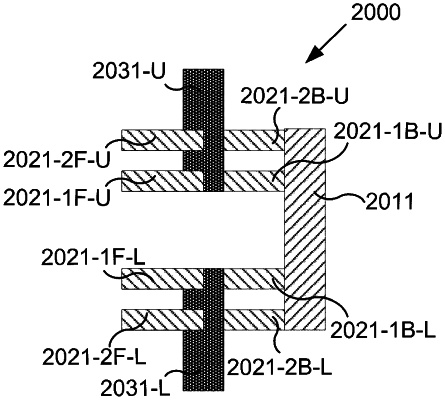| CPC G01R 1/07314 (2013.01) [G01R 1/06722 (2013.01); G01R 1/06738 (2013.01); G01R 3/00 (2013.01)] | 3 Claims |

|
1. A probe for making contact between two electronic circuit elements, comprising:
(i) at least one relatively rigid standoff having a proximal end and a distal end;
(ii) at least one first compliant element that has a non-linear substantially planar configuration when not biased and that provides compliance in a direction substantially perpendicular to the planar configuration of the first compliant element, wherein a first portion of the first compliant element functionally joins the standoff at a location closer to the proximal end than the distal end and a second portion of the first compliant element functionally joins a first tip that can compliantly move relative to the standoff, wherein the first tip extends longitudinally beyond the proximal end of the at least one standoff when the first compliant element is not biased; and
(iii) at least one second compliant element that provides compliance in a direction substantially perpendicular to the planar configuration of the first compliant element, wherein a first portion of the second compliant element functionally joins the standoff at a location closer to the distal end than the proximal end and a second portion of the second compliant element functionally joins a second tip that can compliantly move wherein the second tip extends longitudinally beyond the distal end of the at least one standoff when the second compliant element is not biased, wherein the first and second compliant elements are spaced from one another along at least a portion of a longitudinal length of the at least one standoff and undergo opposite longitudinal changes when the first and second tips are compressed;
wherein the second compliant element has a non-linear substantially planar configuration when not biased and provides compliance in a direction substantially perpendicular to the planar configuration of both the first and second compliant elements; and
wherein the first compliant element comprises at least two longitudinally spaced compliant elements which are functionally joined to the first tip such that they move together upon longitudinal compression of the first tip toward the second tip, and wherein the second compliant element comprises at least two longitudinally spaced compliant elements which are functionally joined to the second tip such that they move together upon longitudinal compression of the second tip toward the first tip.
|